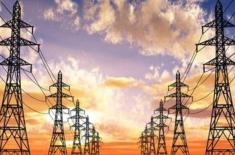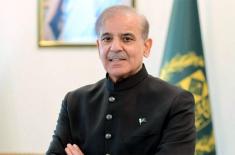
Pakistani Consumers Driving Gradual Shift In Power Sector: PER 2025
Faizan Hashmi Published May 09, 2025 | 11:25 PM

A year after mounting concerns over Pakistan’s power sector, fresh insights point to early signs of change, as the Pakistan Electricity Review (PER) 2025 highlights a slow but steady transition underway
ISLAMABAD, (UrduPoint / Pakistan Point News - 9th May, 2025) A year after mounting concerns over Pakistan’s power sector, fresh insights point to early signs of change, as the Pakistan Electricity Review (PER) 2025 highlights a slow but steady transition underway.
Launched by Renewables First, the report notes that while challenges remain, the shift is being partly driven by an unexpected force — the Pakistani consumer.
The review covers Pakistan's power sector performance during fiscal year 2024 (FY24), capturing the trends, decisions, and disruptions that shaped this critical year. While many of the sector's structural issues persist, 2024 stood out for the sheer pace at which rooftop solar took off, said a press release issued on Friday.
Driven by a record-breaking 16 GW in solar PV imports from China, households and industries across the country installed thousands of systems in pursuit of cost relief and reliability. As of March 2025. 4.9 GW of net-metered solar capacity had been installed, a number that doesn't even include behind-the-meter setups, which remain untracked. It's a quiet revolution, led by people taking energy into their own hands.
"This wasn't just another year, it was a shift," said Rabia Babar, Manager Data Energy and Climate at Renewables First, during the launch of the webinar. "Consumers are telling us something, loud and clear: they're building their own."
But as more people turn to solar, the national grid, is beginning to feel the pressure. Transmission bottlenecks remain a major issue, especially in transferring power from southern generation zones to demand centers in the north.
"One of the most concerning trends is the continued rise in capacity payments. These payments jumped by 29% in FY23. In FY24, they jumped again, by 46%, reaching PKR 1.9 trillion."
During the panel discussion, the challenges of this new dynamic were brought into focus. The surge in rooftop solar has created momentum, but not without consequences. As the discussion unfolded, Dr. Dinita from Ember Asia highlighted the encouraging trend of consumers driving the energy transition. However, she emphasized that this bottom-up momentum must be complemented by strong top-down planning to ensure long-term sustainability. Citing examples from the Global South, she noted that "while countries like Thailand and Vietnam are making commendable progress in solar PV adoption, the pace and scale of growth in Pakistan remain unmatched in the region."
Mentioning some of the challenges associated with Distributed Energy Resources (DERs) integration, Ernst Kuneman of Agora Energiewende, added that DERs can help defer costly investments. If DERs are deployed in a coordinated fashion, they can help reduce peak demands and can also contribute to removing congestion from the grid.
As the Review notes, the electricity sector remains under stress, but it's not static. Households are acting. Industries are shifting. And the cracks in the old model are becoming more visible.
FY24 might not have fixed the system, but it made clear that change is already happening.
The Pakistan Electricity Review 2025 serves as both a mirror and a map: a reflection of where the sector stands, and a guide to where it urgently needs to go.
Recent Stories

Sindh Minister of Energy, Development, and Planning, Sindh, Syed Nasir Hussain S ..

Two killed in Karachi road accident

Pakistani consumers driving gradual shift in power sector: PER 2025

PM expresses satisfaction over IMF tranche approval, slams India’s “Failed T ..

DPM Dar briefs Turkish FM on worsening regional situation

DC directs all departments to intensify anti-dengue efforts

India's invasion of Pakistan very unpopular, unacceptable: Prof Cheng

Police arrest 25 suspects, recover huge quantity of hashish, mainpuri

RTO-1 gears up action against PoS violations, 3 outlets sealed

Owners of 6-storey commercial building booked for occupying govt land

India supporting terrorism in Pakistan: Director General Inter-Services Public R ..

Provision of jobs to youth top priority of govt: Hadiya Nawaz
More Stories From Pakistan
-

Sindh Minister of Energy, Development, and Planning, Sindh, Syed Nasir Hussain Shah visits Institute ..
43 seconds ago -

Two killed in Karachi road accident
44 seconds ago -

Pakistani consumers driving gradual shift in power sector: PER 2025
46 seconds ago -

PM expresses satisfaction over IMF tranche approval, slams India’s “Failed Tactics”
47 seconds ago -

DPM Dar briefs Turkish FM on worsening regional situation
49 seconds ago -

DC directs all departments to intensify anti-dengue efforts
10 minutes ago
-

Police arrest 25 suspects, recover huge quantity of hashish, mainpuri
10 minutes ago -

RTO-1 gears up action against PoS violations, 3 outlets sealed
10 minutes ago -

Owners of 6-storey commercial building booked for occupying govt land
10 minutes ago -

India supporting terrorism in Pakistan: Director General Inter-Services Public Relations (DG ISPR) L ..
24 minutes ago -

Provision of jobs to youth top priority of govt: Hadiya Nawaz
18 minutes ago -

‘Pakistan Rally’ to be held against Indian aggression on Sunday
18 minutes ago











